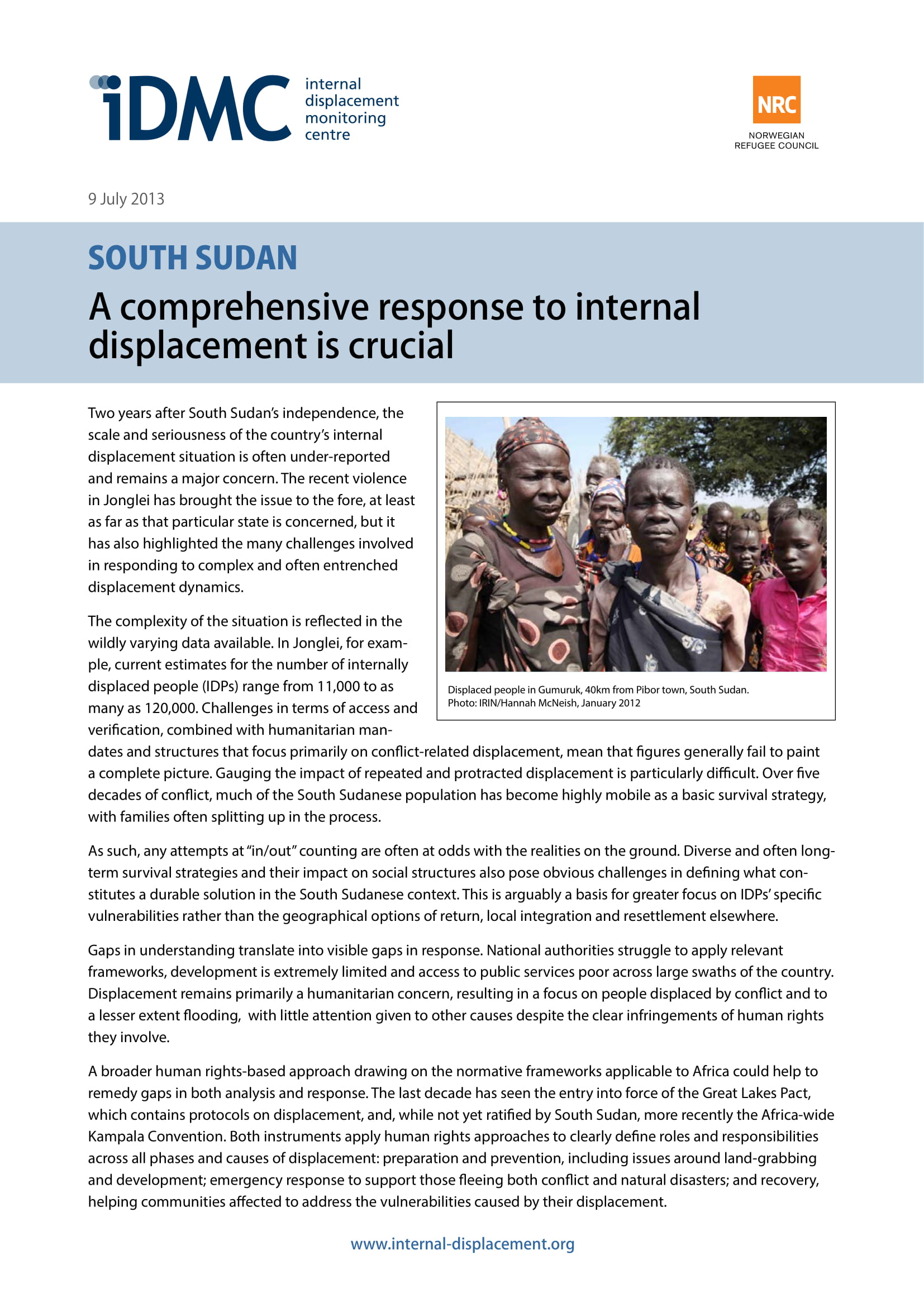Publication
09 July 2013
South Sudan: A comprehensive response to internal displacement is crucial

Two years after South Sudan’s independence, the scale and seriousness of the country’s internal displacement situation is often under-reported and remains a major concern. The recent violence in Jonglei has brought the issue to the fore, at least as far as that particular state is concerned, but it has also highlighted the many challenges involved in responding to complex and often entrenched displacement dynamics.
The complexity of the situation is reflected in the wildly varying data available. In Jonglei, for example, current estimates for the number of internally displaced people (IDPs) range from 11,000 to as many as 120,000. Challenges in terms of access and verification, combined with humanitarian mandates and structures that focus primarily on conflict-related displacement, mean that figures generally fail to paint a complete picture. Gauging the impact of repeated and protracted displacement is particularly difficult. Over five decades of conflict, much of the South Sudanese population has become highly mobile as a basic survival strategy, with families often splitting up in the process.
As such, any attempts at “in/out” counting are often at odds with the realities on the ground. Diverse and often longterm survival strategies and their impact on social structures also pose obvious challenges in defining what constitutes a durable solution in the South Sudanese context. This is arguably a basis for greater focus on IDPs’ specific vulnerabilities rather than the geographical options of return, local integration and resettlement elsewhere.